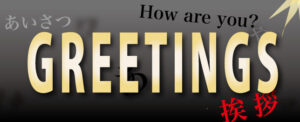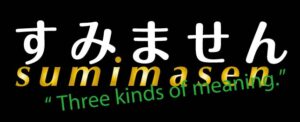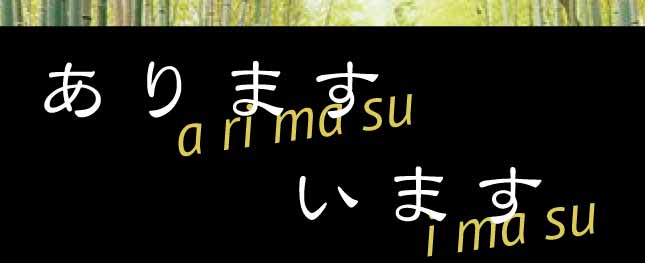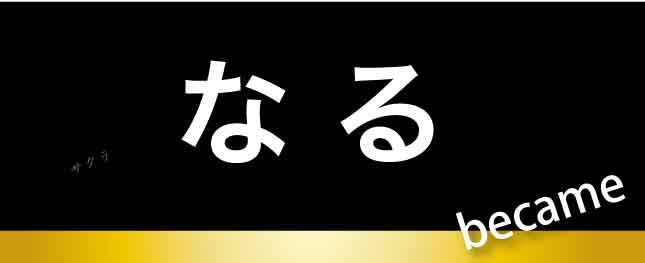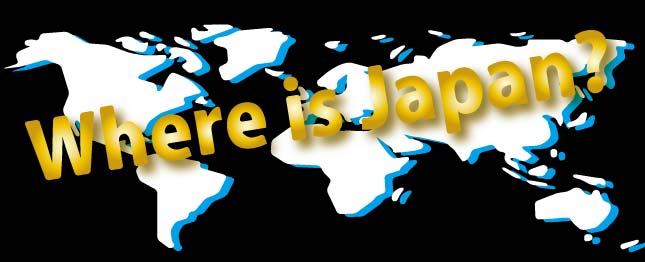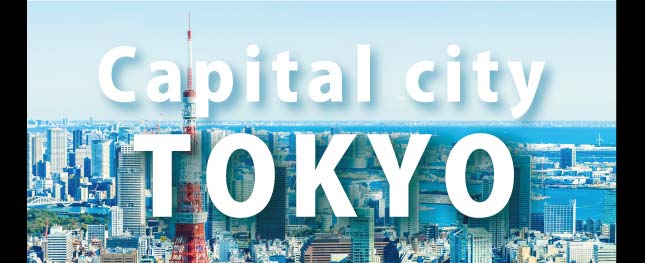History

This example is a rough list of the history of the Japanese archipelago.
The history of humankind confirmed in the Japanese archipelago dates back to about 100,000 years.
Since ancient times, Hokkaido and Kyushu have been connected to the continent, and around 50,000 BC, stone tools are widely used in Siberia and the Japanese archipelago.
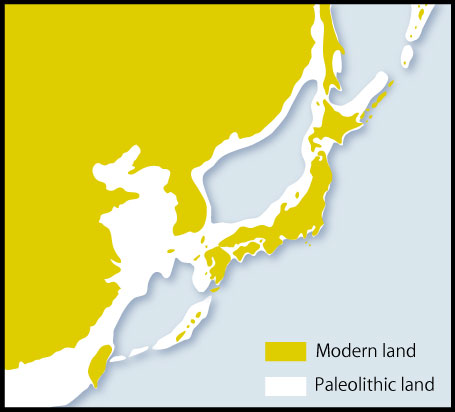
Due to the cold climate and the sea level is 100 -120m lower than it is now, the Sea of Japan is still a lake and animals and humans flow in from the continent.
Cooling peaked about 20,000 years ago and turned into warming, the sea level rose, and the formation of the Japanese archipelago began.
Sea levels will rise due to global warming, and the Japanese archipelago will look like it is today.
Pottery decorated with uplift lines begins to be used in a wide area from Kyushu to Tohoku. The use of earthenware dramatically increases edible food.
Rice cultivation is transmitted from the continent, and an agricultural culture using iron and bronze ware emerges.
People came to live in groups, and a hierarchical society appeared in a group that was basically equal.
There is a difference between rich and poor. Eventually formed as multiple small countries.


It is called the Asuka period because the headquarters of the Yamato kingdom was placed in Asuka.
In the early Asuka period, when Soga, a Buddhist pro-Buddhist sect, won the battle, a Buddhist temple was built and the emperor, who was supported by Soga, was enthroned. I was holding it. A constitution and a coup d’etat were established on the way of Prince Shotoku, and due to political changes, he became a coup d’etat centered on the emperor.
It is called the Asuka period because the headquarters of the Yamato kingdom was placed in Asuka.
In the early Asuka period, when Soga, a Buddhist pro-Buddhist sect, won the battle, a Buddhist temple was built and the emperor, who was supported by Soga, was enthroned. I was holding it. A constitution and a coup d’etat were established on the way of Prince Shotoku, and due to political changes, he became a coup d’etat centered on the emperor.
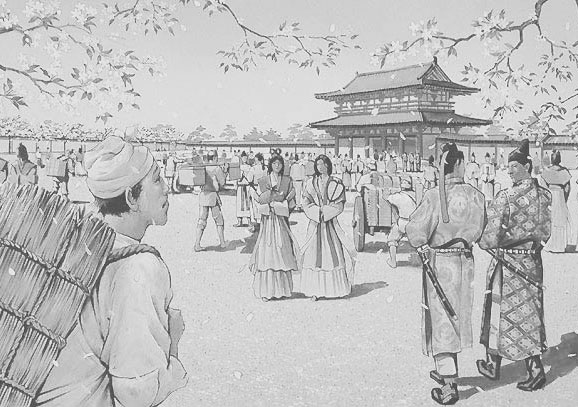
The capital (Heijokyo) was set up in Nara, and envoys to Tang were actively dispatched to form and deepen the Ritsuryo national system.
During this period, disasters such as droughts, famines, and wildfires and epidemics occurred frequently. In particular, smallpox that occurred between 735 and 737 caused a large number of deaths, both aristocrats and ordinary people, and Emperor Shomu, who believed that these disasters were caused by his disbelief, devoted himself to Buddhism. It deepened and promoted national Buddhism promotion such as ordering the construction of Todaiji Temple.

In terms of culture, “Nihon Shoki” etc. were compiled, and the Tenpyo culture, which was influenced by the continental culture brought by the envoy to Tang, prospered. Although Buddhism was controlled by the government, the idea of a national guardianship became stronger, and Todaiji Temple and Kokubunji Temple were erected under the pretext of national protection at the request of Emperor Shomu. Shosoin treasures are famous for crafts.n terms of culture, “Nihon Shoki” etc. were compiled, and the Tenpyo culture, which was influenced by the continental culture brought by the envoy to Tang, prospered. Although Buddhism was controlled by the government, the idea of a national guardianship became stronger, and Todaiji Temple and Kokubunji Temple were erected under the pretext of national protection at the request of Emperor Shomu. Shosoin treasures are famous for crafts.
In addition, the imperial court promoted decentralized national system reform from the beginning of the 11th century, and established a dynasty national system. On the military side to support local governance, the samurai class, which is a public official who is authorized to use force, emerged on the occasion of helping to resolve the military crisis at home and abroad.In addition, the imperial court promoted decentralized national system reform from the beginning of the 11th century, and established a dynasty national system. On the military side to support local governance, the samurai class, which is a public official who is authorized to use force, emerged on the occasion of helping to resolve the military crisis at home and abroad.
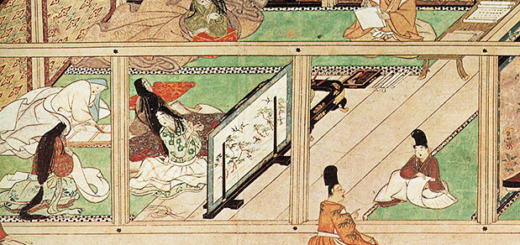
From the end of the 12th century, a medieval rule system called the villa government system was established, in which samurai who could withstand the armed conflict of land control became the local lords as local managers. At the same time, the cloister rule, in which the emperor was in charge of politics as the prince of the heavens, began, and at the end of the Heian period, the military power of the samurai began to influence the outcome of the political disputes in the central political world, and as a result, politics in the central political world. The Taira administration, which is evaluated as the primitive samurai administration by Mr. Ise Heishi, who took the initiative in the politics, has appeared.
In addition, the Japaneseization of culture, which has been gradually progressing since the Nara period, has come to fruition as a national culture, and hiragana and katakana created based on kanji have come to be used, as represented by “Genji Monogatari”. Narrative literature and the like have blossomed. Esoteric Buddhism and Mappo thought were widely believed, Shinbutsu-shugo progressed, and many temples were built.
An era when the central (Kyoto) Kuge administration and the Kanto samurai administration side by side. The Kamakura Shogunate, headed by Minamoto no Yoritomo, overthrew the Taira administration and grew into an administration that could line up with the imperial court (Kuge administration). As a result of the Jokyu War in the first half of the 13th century, the Kuge administration was subordinate to the Samurai administration. After that, the politics of authority was established, in which Mr. Hojo, the head of the Gokenin who served the shogun, effectively led the politics of the shogunate.
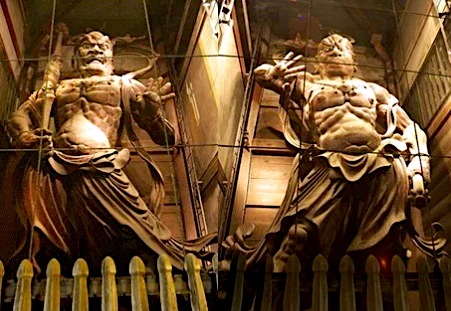
In terms of culture, realistic art such as the statue of King Nio of Todaiji Temple in Unkei and Kaikei developed.
In terms of religion, Buddhism became widespread among the people due to the establishment of the new Kamakura Buddhism, which originated from the Buddhism of the overt system aimed at the guardian state.
It refers to the period of the civil war between the North and South Dynasties for more than 50 years from the middle to the end of the 14th century. Included in the Muromachi period in a broad sense.
After the middle of the Kamakura period, the imperial family was divided into the Daikakuji line and the Jimyoin line and fought for succession to the throne. There were two emperors at the same time, and the Northern and Southern Dynasties began here.
After reigning from the Daikakuji line, Emperor Go-Daigo failed to destroy the Shogunate but was swept away by Oki, and the Shogunate reigned Emperor Kogon of the Jimyoin line. The Kamakura Shogunate is destroyed by Takauji Ashikaga and Yoshisada Nitta.
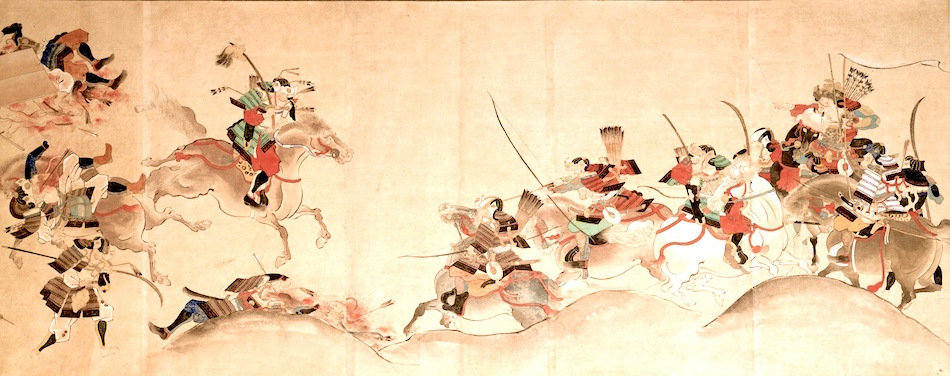
Emperor Go-Daigo dismissed Emperor Kogon and carried out a politics of the Emperor’s monopoly called Kenmu’s new government, but when the dissatisfaction of the samurai class increased, Takauji separated from the new government against the background and established the Jimyoin line at Daikakuji Temple. I followed the politics to Yoshino in the south. The alteration of the multi-layered land control structure revealed conflicts in each layer of society, and a nationwide conflict was developed with the conflict between the North and South Dynasties as the cause.
At the end of the period, the Southern Court was virtually absorbed by the Northern Court by the union of the Northern and Southern Courts, and the national unification by the Muromachi Shogunate was nominally completed in 1392.
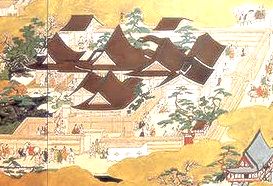
Yoshimitsu Ashikaga, the third shogun of the Muromachi Shogunate, achieved the unification of the North and South Dynasties, and also traded between Japan and Ming, and was sealed by the Emperor Ming to the King of Japan. Yoshimitsu tried to suppress the power of the guardian daimyo, but the expansion orientation of the guardian daimyo was deep-rooted, and many wars between the shogunate and the guardian occurred. The shogunate-guardian system lasted until the middle of the 15th century, but when it was greatly disturbed by the Onin War, it finally collapsed due to the political change of Meio and moved to the Warring States period.
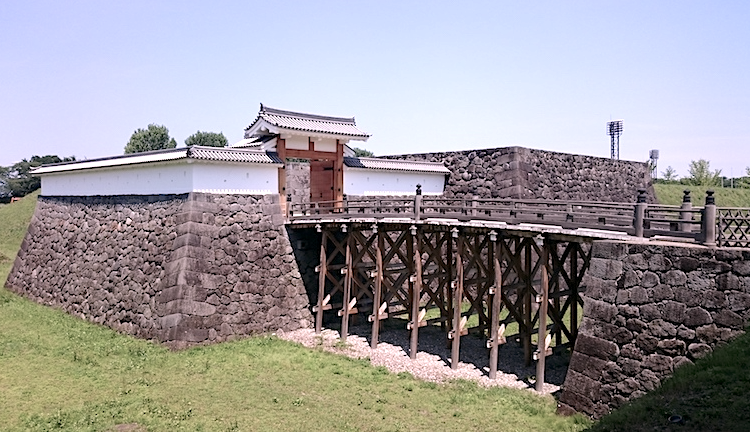
Sengoku daimyo, whose origins were samurai administrative officers set up by the Kamakura Shogunate and Muromachi Shogunate, appeared, and those Sengoku daimyo forces gradually broke the medieval rule system and strengthened their independence in various places, such as enacting the division law. The territory controlled by one circle developed into a regional nation, and many regional nations with a unified control system lined up in various parts of Japan. Political and economic contradictions between regional nations were resolved by force.
During this era, cities were rapidly formed in various parts of the country as agricultural productivity improved and distribution within regional nations developed. In addition, when trade with Europe (Nanban trade) began and matchlocks and Christianity were introduced, the tactics and religious ideas of Japan changed. Nanban trade continued to influence Japan’s politics and economy until the end of the Edo period.
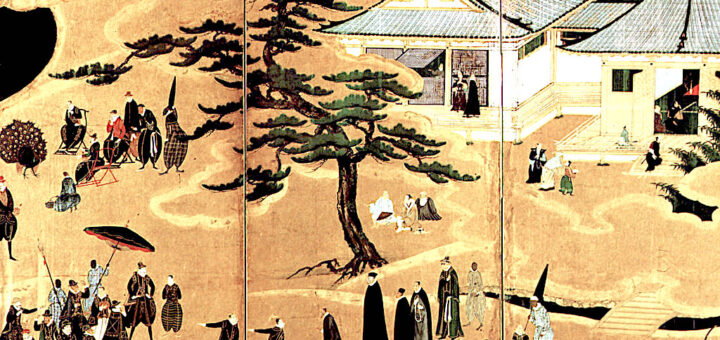
When the daimyo, Nobunaga Oda, expelled Shogun Ashikaga Yoshiaki, he established the Kinai administration to replace the Muromachi Shogunate. When Nobunaga Oda committed suicide by Coodata, Hideyoshi Toyotomi took over the business of unifying the world.
Toyotomi Hideyoshi settled the area from Tohoku to Kyushu with Nobunaga’s power base as the base, and completed the unified project. It eliminated the exclusion and restraint of the medieval rule system. When Hideyoshi’s unification of the world brought political and economic stability, the magnificent Momoyama culture prospered, centered on daimyo and samurai.
Hideyoshi sent troops to Korea, but he died during that time. The Toyotomi administration, which also had problems with successors, weakened.
After Hideyoshi’s death, Ieyasu Tokugawa won the Battle of Sekigahara and seized power, opened the shogunate in Edo (Tokyo), and destroyed Toyotomi in the Siege of Osaka. By the middle of the 17th century, the Bakufu established the master-slave system with various daimyo through the promulgation of the Buke Shohatto, the obligatory change of attendance, and the reform of influential daimyo. It was maintained.
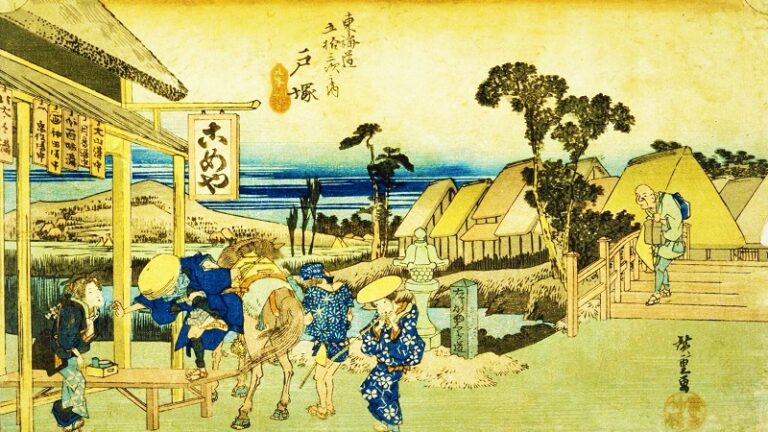
On the other hand, with the stabilization of society, large-scale projects for cultivated land development have been implemented in various places, and the doubled cultivated land area will bring about increased food production and population. Greatly developed the distribution economy. As described above, the control system established in the early Edo period is called the Bakuhan system. Social stability and economic growth supported the development of the city and resulted in the Genroku culture of the latter half of the 17th century.
By the middle of the 19th century, the Shogunate, in response to social contradictions at home and pressure from abroad, had increased its military buildup with a loan from the Societe Generale de France. However, with the arrival of the U.S. fleet in the latter half of the century and the opening of Japan to the outside world with the conclusion of the Treaty of Amity between Japan and the U.S., the Shogunate’s control of trade (seclusion) was lifted. The Shogunate’s prestige declined as it concluded unequal treaties of amity and commerce with other countries without imperial authorization. The authority of the Imperial Court increased, and the Shogunate attempted to preserve its power by returning power to the Court, but after losing a civil war with the overthrowing Shogunate faction, the Shogunate was dissolved.
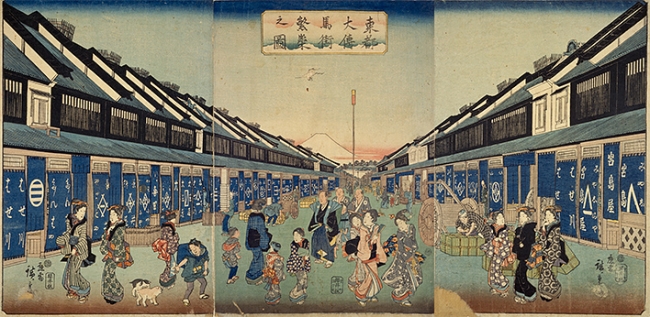
The Meiji Restoration government, centered on the feudal lords of the fallen sect, established the Meiji new government by the restoration of the royal government after rejecting the former Shogunate forces after the Boshin War. The new government actively introduced Western systems based on the Iwakura Mission’s world tour. A series of reforms called the Meiji Restoration extended to the abolition of the feudal clan, the equalization of the four people, and the development of the Six Codes, the postal service, the railway, and the water supply. In the process, the Ryukyu Kingdom, which was the border area of Japan, Ezo (most of Hokkaido and the Kuril Islands) excluding Sakhalin, and the Ogasawara Islands were completely placed within the area of Japan, and the border was demarcated.
In order to revise the commercial treaties signed with other countries, while striving to improve the national system such as the establishment of the Imperial Diet and the establishment of the Constitution of the Empire of Japan, it promoted industrial development and strengthening of military power as a national policy.

By winning the Sino-Japanese War and the Russo-Japanese War, the treaty was revised. On the other hand, it expanded its territory by governing Taiwan and annexing South Korea.
In terms of culture, when new scholarship, art, and cultural artifacts were introduced from Europe and the United States, the state was called civilization, and a culture that was significantly different from that before the Edo period developed. Genbun Itchi, Hentaigana, and standard language were promoted, and modern Japanese was established. On the religious side, the traditional mixture of Shinto and Buddhism was changed (Shinbutsu bunri), and the danka system was abolished. The shrine was incorporated into the administrative organization and reorganized into State Shinto centered on the imperial family. This suppressed Buddhism (Haibutsu Kishaku). Christianity has succeeded in exporting both institutional and capital as a matter of Western circumstances, and even though the reason for missionary work has diminished, it has come to occupy a social status in educational institutions such as Doshisha University.
Showa financial crisis occurred in 1945. In 1945, the Great Depression that occurred from the United States hit the Japanese economy directly (Showa Depression). In national politics, the confrontation between the two major parties has brought to the surface the issue of commandership, and the lifting of the ban on money has failed, increasing distrust of party politics.

When the active Prime Minister Tsuyoshi Inukai was assassinated in 1932 (Showa 7), the former Governor-General of Korea, Minoru Saito, became prime minister with the cooperation of the Constitutional Democratic Party, while the Constitutional Democratic Party was the first party in national affairs. After ending the Manchurian Incident with the Tanggu Truce, the Saito Cabinet approved Manchuria, which was born by the incident, and announced its withdrawal to the League of Nations, which opposes it.
In 1936, a coup d’etat of the February 26 Incident by a youth officer of the Army occurred, but it was suppressed. Japan, which had withdrawn from the United Nations at that time, signed an anti-Comintern Pact with Germany, which had also withdrawn. In 1937, the Battle of Shanghai broke out in Shanghai, China, and Japan entered a war with the Republic of China. In 1940, the Tripartite Pact of Japan, Germany and Italy was signed with Nazi Germany and the Kingdom of Italy. When the Japanese invasion of France in 1941 decisively deteriorated relations with the United States, Japan decided to war with the United States, and the Malayan Campaign and the subsequent attack on Pearl Harbor surprised the American army, and the Pacific War (WWII). Entered the Great War / Great East Asia War).

Source::wiki
The Japanese army maintained its superiority at the beginning of the war, but was gradually overwhelmed by the productivity of the US army and the destruction of commerce, and was defeated in various places. At the end of the war, all major cities were burned by strategic bombing, and atomic bombs were dropped on Hiroshima and Nagasaki. In 1945, Japan was defeated by accepting the Potsdam Declaration due to the decree of Emperor Showa.
After the war, the Constitution of Japan was newly enacted, which stipulates the symbolic emperor system, popular sovereignty, and pacifism based on the occupation policy of the Supreme Commander for the Allied Powers (GHQ). Land reform and zaibatsu dissolution were carried out to neutralize the “economic foundation of the war of aggression.” In 1952, Japan joined the World Bank and the International Monetary Fund.
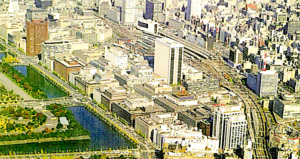
In the Korean War, based on the orders of the occupation forces, they carried out support activities for South Korea, such as sending scavenging units and port workers to the Korean Peninsula. After regaining sovereignty under the San Francisco Peace Treaty in 1952, the introduction of foreign bonds rapidly promoted postwar reconstruction, and the chaebol was transformed into a corporate group and revived. The US-Japan Security Treaty was signed as the Western camp during the Cold War. After independence, Japan took a position closer to the United States among the Western countries, but did not dispatch military force overseas based on Article 9 of the Constitution of Japan. With the exception of South Korea’s military occupation of Takeshima, which occurred just before the San Francisco Peace Treaty came into effect, postwar Japan was not exposed to the use of military force from other countries. The year after the 1955 system of the Liberal Democratic Party and the Socialist Party was established, Japan achieved the Japan-Soviet Joint Declaration and membership in the United Nations. In 1972, diplomatic relations between Japan and China were normalized and Okinawa was returned.
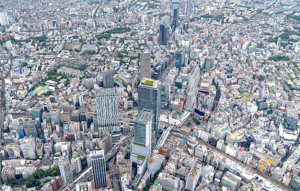
In the 1960s, Japan’s GDP achieved high economic growth despite the securities recession. With this, Japan became the third most developed country in the world after the United States and the Soviet Union. The 1970s was called the stable growth period because it was able to make a soft landing despite the double pain of the Nixon shock and the oil shock. The industrial structure has changed, with the leading role of the industry shifting from the heavy chemical industry to automobiles and electric appliances. On the other hand, the problem of pollution and diseases has become more serious from the inclined production method to stable growth. In addition, the export offensive of Japanese companies caused trade friction.
At the end of the Showa era, the Plaza Accord was reached shortly after the Nakasone Cabinet’s privatization policy began to be promoted. This caused a recession due to the appreciation of the yen, and excessive monetary easing was carried out there, leading to the arrival of the bubble economy.
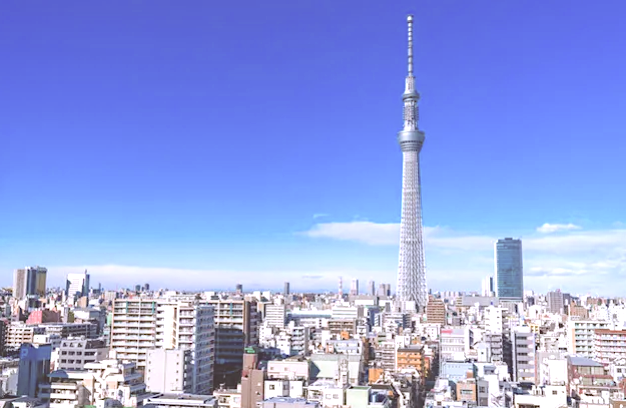
The 1955 system of both parties collapsed, and a short-lived non-Liberal Democratic coalition government was established. And there was a change of government in 2009 and 2012. Large-scale disasters such as the Great Hanshin-Awaji Earthquake, the subway sarin attack, the Great East Japan Earthquake, and the Fukushima Daiichi Nuclear Power Station accident occurred, which triggered a heightened awareness of crisis management.
Entering the 21st century, emerging countries such as BRICS are emerging. Deindustrialization in developed countries including Japan, debt excess in national finance and pension accounting, currency crisis, and falling to the middle class poor have become prominent, and have had an overwhelming influence on the world economy in the past. The economic and political advancement of Japan and Europe and the United States has become questionable.
The Internet and mobile phones have changed the world, and Japan is facing a labor shortage due to the economic improvement and declining birthrate, and new technologies such as artificial intelligence, autonomous driving, and robots are expected to reduce the burden on humans.
Thank you for reading! ありがとう。 Namu Shinnyo ■






